“You are what you eat” is an old expression your grandmother’s grandmother probably used, but it’s not actually correct technically speaking. 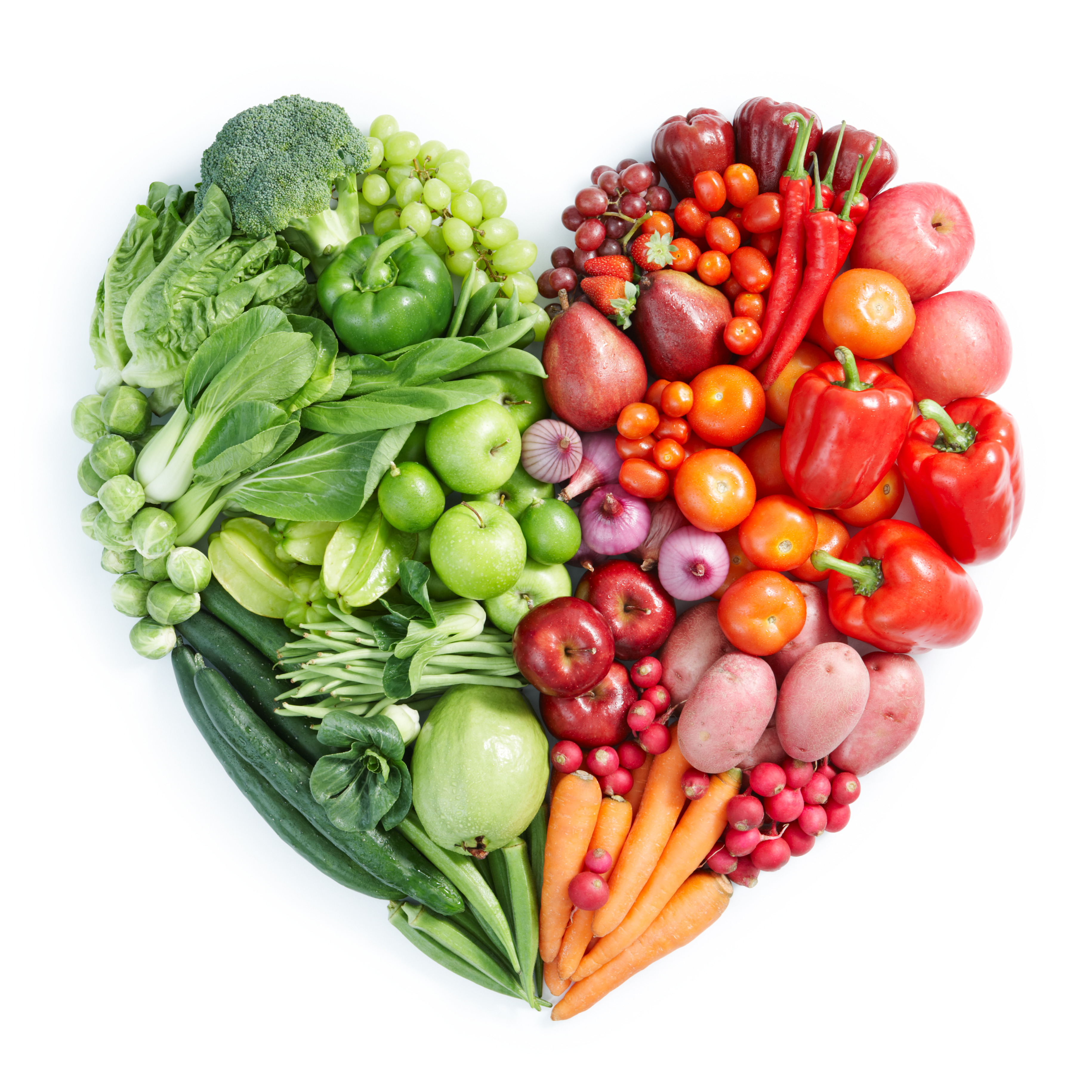 Putting on my nerd hat to be a stickler for the details, it’s more accurate to say “you are what you absorb.” Grandma’s sage advice does a good job of illustrating that what we ingest is obviously essential to our health, but what we ingest that actually gets absorbed and utilized by the body is the crux of the issue truth be told.
Putting on my nerd hat to be a stickler for the details, it’s more accurate to say “you are what you absorb.” Grandma’s sage advice does a good job of illustrating that what we ingest is obviously essential to our health, but what we ingest that actually gets absorbed and utilized by the body is the crux of the issue truth be told.
The piles of studies that have been growing in recent years showing all manner of potential benefits of various nutrients has been very encouraging. We are experiencing an exciting time in nutritional science where new compounds are being discovered – and tested for their potential benefits – almost daily. Compounds that may help prevent cancer, improve immunity, improve weight loss, improve brain function, or improve athletic performance, to name just the tip of the iceberg of where science is currently looking to isolate and test various nutrients for their bio active properties.
How the process works:
Once a compound is discovered, it tends to get isolated, and then tested in either animal models and or in vitro (test tube) to test what positive or negative properties may exist as well as elucidate how they work. That is, understand not just what system they may impact (such as increase an animal’s ability to resist cancer causing chemicals for example) but also examine the isolated compounds’ “mechanism of action” which shows how it achieves the effect. How does that work? Let’s say some spice has been used for generations to reduce infections or improve immunity. Scientists might then feed, or inject, large amounts to lab animals (e.g., mice, rats, rabbits, etc.) and see if it does indeed have activity; perhaps testing how that spice reduces the size of tumors when the mice are exposed to known carcinogens, or bacteria known to cause infections and so forth. If that spice shows biological activity, scientists will often look deeper into that spice to see which specific constituent(s) in the spice are having the “active” compounds, and once found, will concentrate and isolate that active compound and further tests on animals, or humans, or in vitro (test tube) will continue. Foods and spices for example, are highly complex and can have hundreds or even thousands of biologically active compounds in them.
A few examples:
Green tea is a good example. Studies found green tea associated with a reduced risk of a number of diseases – such as various cancers – in populations who regularly consumed green tea. Green tea extracts were developed and tested, and scientists began to test the actual individual compounds found in the green tea extracts. Green tea was found to contain compounds known as polyphenols classified as catechins. Green tea contains six primary catechins: catechin, epicatechin, gallaogatechin, epigallocatechin, epicatechin gallate, and apigallocatechin gallate (EGCG). EGCG appears to be the most biologically active and is the most studied catechin found in green tea to date. Green tea also contains alkaloids including caffeine, theobromine, and theophylline. Many will recognize those last three as they are responsible for the stimulant effects of green tea and often found in various pre workout and energy type formulas. Finally, L-theanine is found in green tea and has been studied for its calming effects on the nervous system and often sold alone as a stress reducing supplement. BTW, It’s not unusual that a plant, or herb or food may contain compounds that have seemingly opposite effects to each other (such as caffeine and L-theanine found in green tea), but that’s another topic for another article.
A similar story exists for popular extracts such as grape skin extracts and Curcumin. Population based studies found reduced rates of certain diseases in people who consumed 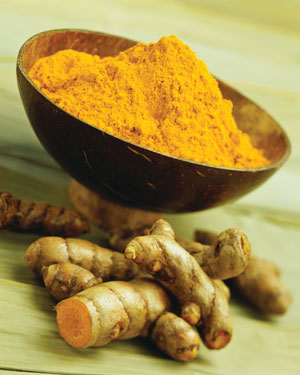 them, extracts developed and tested, and individual compounds within those extracts isolated . For example, Resveratrol is a compound found in grapes, red wine, and purple grape juice, and shown to have a wide range of potential health benefits, which include anti-inflammatory, cardioprotective, anti-oxidant, and anti-tumor activities, and is marketed and sold as a supplement. Resveratrol has garnered a great deal of interest with researchers as it continues to show a wide range of potential benefits, some quite unexpected.
them, extracts developed and tested, and individual compounds within those extracts isolated . For example, Resveratrol is a compound found in grapes, red wine, and purple grape juice, and shown to have a wide range of potential health benefits, which include anti-inflammatory, cardioprotective, anti-oxidant, and anti-tumor activities, and is marketed and sold as a supplement. Resveratrol has garnered a great deal of interest with researchers as it continues to show a wide range of potential benefits, some quite unexpected.
Curcumin is found in turmeric spice and is getting a great deal of attention in the scientific and medical community, and rightly so. Curcumin contains a number of bio active compounds collectively called curcuminoids. Studies have been very promising and suggest curcumin may positively impact a wide range of human conditions, acting as an anti-inflammatory, antioxidant, chemopreventive (cancer-preventive) agent, and antineoplastic (cancer-fighting) , to name a few possible benefits of curcumin and it’s bio active constituents. As one would expect, curcumin is quickly becoming a popular nutritional supplement.
as this article is not intended as an extensive look into the science of these extracts per se, but an example of how discoveries are made and the growing list of studies that show real promise in preventing and or treating various human ailments using extracts and constituents found within them, bringing me to the reason for this article…
2+2 does not always = 4
The above would lead the reader to conclude the study findings must mean using these various extracts will help fight diseases or prevent them in humans. Well, per usual, it’s not that simple. If my decades of research in the nutritional sciences have taught me anything, it’s that 2+2 rarely = 4 in human physiology. Some times it equals 6, and some times it equals zero, but rarely as you expect. Such is the case for many of these extracts, hence the title of this article! As explained above, the typical process is to look at these extracts and or bioactive compounds isolated from those extracts in isolation, doing in vitro (test tube) studies and or feeding them (or injecting them) at very high doses to animals. Those studies are often extrapolated to humans. However, it’s often the case that when tested directly in humans, the results are less than impressive. Why? The answer to that gets complex quickly and depends very much on the individual compound being examined and studied, but some useful generalities can be discussed. Although each compound, be it extract, food, vitamin, etc. may have it’s own unique properties as to why human studies don’t live up to the effects found in animals or test tubes, two key issues are often at play as to why the human studies are disappointing when studies in test tubes and animals looks so promising, which can be summed up as “absorption and metabolism”
Absorption and Metabolism
Resveratrol is an excellent example of the second issue listed: metabolism. Resveratrol, in particular as trans- Resveratrol, appears to be adequately absorbed by humans. However, due to its rapid metabolism and elimination – and other factors – it’s actually considered to have a relatively low bioavailability and research is ongoing to find ways of improving Resveratrol’s effects in humans by employing novel delivery systems that may extend it’s metabolism. It’s important to note that the term “metabolism” as it applies to the topic covered here, is a highly generalized term for an extremely complex system beyond the scope of this article.
Curcumin is the poster child for the first issue mentioned: absorption. For any compound, vitamin, or nutrient, it must get digested and absorbed to be metabolized. Many people are under the impression digestion and absorption are a simple matter of everything we eat being dumped into some acid in the stomach, and absorbed. Nothing could be further from the truth and human digestion is an extremely complex system. For brevities sake, I’m going to cover the essential basics, using curcumin as an example. It’s well established that compounds with poor solubility are poorly absorbed and have poor bioavailability. Compounds must be “solubilized” by the body before they can be absorbed. It’s 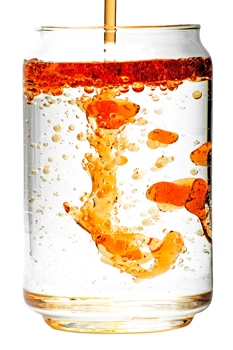 accurate to say that solubilization, absorption, and metabolism are three key steps that modulate oral bioavailability of an ingested compound. In many cases, there’s a direct relationship to the solubility of the compounds or nutrient and it’s bioavailability. Most people have heard of fat soluble and water soluble vitamins for example, and have a better understanding of the basic concept of solubility than they may think.
accurate to say that solubilization, absorption, and metabolism are three key steps that modulate oral bioavailability of an ingested compound. In many cases, there’s a direct relationship to the solubility of the compounds or nutrient and it’s bioavailability. Most people have heard of fat soluble and water soluble vitamins for example, and have a better understanding of the basic concept of solubility than they may think.
If you dump a T-spoon of table sugar into a big glass of water and stir, it mixes fairly quickly. It’s solubilized. If you dump a T spoon of vegetable oil into the glass, no amount of stirring will get them to mix together, because oil (lipids) are not water soluble. If you dump a T spoon of sand into water or oil, no amount of stirring will get it to mix into either, as an extreme example. What if something has very poor water and fat solubility? Well, it tends to go right through you just as the sand would! That’s a highly simplified overview of a very complicated process, but it’s “good enough for government work” as they say to explain the essential concept of solubility.
From the above discussion then, it should come as no surprise that improving the solubility of a compound with poor solubility will often dramatically improve its absorption and bioavailability. In fact, the rate at which poorly water soluble compound dissolves is often the slowest step and therefore can be what’s referred to as the “rate-limiting” step in bioavailability of the compound. Needless to say, for compounds with poor solubility, a key step to improving their bioavailability and effect, is to improve its solubility. There’s a number of technologies companies can employ, some times as simple as micronizing it (reducing it to very small particle sizes) to complex and proprietary processes unique to a company.
Using curcumin as the example, In one study, people were fed up to 12,000mg (12g) of curcumin extract, and virtually no detectable curcuminoids were found in their blood. Curcumin is considered to have extremely poor solubility and various technologies have been attempted to improve it. One potential benefit of improving solubility that benefits buyers and sellers is, improving solubility may allow lower doses to be used to derive benefits, saving space and money for all involved.
One interesting technology recently developed by Glanbia Nutritionals called PhytoForce™ shows real promise when applied to compounds with poor solubility like Curcumin. The PhytoForce™ technology applied to Curcumin showed a 350% increase in solubility and an even more impressive increase in permeability, which are substantial improvements that should result in greatly enhanced bioavailability. Additional botanically derived extracts the technology has been applied to are Milk Thistle, Chrysin, Green tea extract, resveratrol, quercetin and as well as others.
Readers should note this technology is not sold retail, but directly to companies looking to apply it to their products or formulas. For additional information on the PhytoForce™ technology, the company can be contacted directly at: nutrition@glanbia.com
Conclusion.
Discovery of various compounds derived from herbs and other botanicals is an exciting area of nutritional research. Some are proving to be of value in both disease prevention and treatment in humans, vs. say just rats and mice! However, as outlined in this article, discovery and isolation of the active components is only part of the process in terms of being of any real benefit to human beings ingesting them in supplemental form. They need to actually be absorbed and utilized to be of any real value. The application of specific technologies to greatly enhance absorption – especially as it applies to compounds with poor solubility – is an area of research starting to yield novel and useful technology that will improve bio availability. Part II of this series covers proteins, amino acids, and peptides and can be read HERE
Note:

PhytoForce™, is product of Glanbia plc.
Companies interested in the applying this technology to their products should contact: nutrition@glanbia.com
Sources
Bioavailability of resveratrol. Ann N Y Acad Sci. 2011 Jan;1215:9-15.
Resveratrol in medicinal chemistry: a critical review of its pharmacokinetics, drug-delivery, and membrane interactions. Curr Med Chem. 2012;19(11):1663-81.
New delivery systems to improve the bioavailability of resveratrol. Expert Opin Drug Deliv. 2011 Aug;8(8):973-90
Administration of resveratrol: What formulation solutions to bioavailability limitations? J Control Release. 2012 Mar 10;158(2):182-93.
Conundrum and therapeutic potential of curcumin in drug delivery. Crit Rev Ther Drug Carrier Syst. 2010;27(4):279-312.
Bioavailability of curcumin: problems and promises. Mol Pharm. 2007 Nov-Dec;4(6):807-18. Epub 2007 Nov 14.
Anticancer potential of curcumin: preclinical and clinical studies. Anticancer Res. 2003 Jan-Feb;23(1A):363-98.
Investigation of the absorption mechanism of solubilized curcumin using Caco-2 cell monolayers.J Agric Food Chem. 2011 Sep 14;59(17):9120-6. doi: 10.1021/jf201451m. Epub 2011 Aug 17.
Dose escalation of a curcuminoid formulation. BMC Complement Altern Med. 2006 Mar 17;6:10.
Identification of permeability-related hurdles in oral delivery of curcumin using the Caco-2 cell model. Eur J Pharm Biopharm. 2011 Feb;77(2):275-82. doi: 10.1016/j.ejpb.2010.12.006. Epub 2010 Dec 13.
Solubility enhancement of lovastatin by modified locust bean gum using solid dispersion techniques. AAPS PharmSciTech. 2008;9(4):1262-9.
Will Brink is the owner of the Brinkzone Blog. Will has over 30 years experience as a respected author, columnist and consultant, to the supplement, fitness, bodybuilding, and weight loss industry and has been extensively published. Will graduated from Harvard University with a concentration in the natural sciences, and is a consultant to major supplement, dairy, and pharmaceutical companies.
His often ground breaking articles can be found in publications such as Lets Live, Muscle Media 2000, MuscleMag International, The Life Extension Magazine, Muscle n Fitness, Inside Karate, Exercise For Men Only, Body International, Power, Oxygen, Penthouse, Women’s World and The Townsend Letter For Doctors.
He’s also been published in peer reviewed journals.
Will is the author of the popular e-books, both accompanied by private members forum access , Bodybuilding Revealed & Fat Loss Revealed.
You can also buy Will’s other books on Amazon, Apple iBook, and Barnes and Noble.




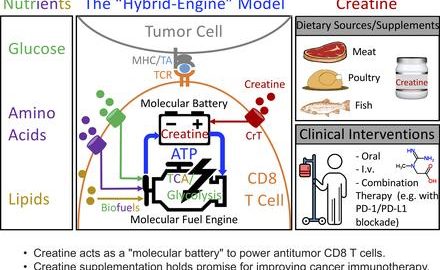
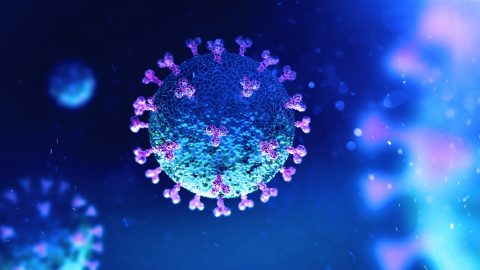

Thanks Will, great article!!!
Merry Christmas!
Thanx Kurt!
Dear Will Brink,
I have a question about supplement use for teens.
I am a 16 year old bodybuilder, and regularly use Creatine, Beta-Alanine, Purple Wraath, NO Boosters and occassionally Caffeine. My parents are worried about the long term effects.
I’ve tried to convince them of the safety, but they say they would like “expertise” about the topic.
My diet and training are as good as possible.
Huge thanks!!!!
Rein van der Woerd
All those supplements require examination on their own, some may be fine for teens, other not, some worthless for anyone. I can’t go through all that in a post. I do have many free articles and vids here you can see, and various programs and books you might want to consider which will save you time and $$$.
On the surface, I’d say you are likely using far more supplements than needed as a teen. I have yet to meet a teen who has their diet and training so squared away they needed to add supplements BTW,
Will, I am on your e-mail list but I never take the time to comment or push the little red button, so today I am telling you that I enjoy your articles a great deal, keep up the good work, thank you
larry shaffer
Thanx Larry! 🙂
Thanks for the info Will.
What do you think of the use of black pepper extract to enhance bioavailability?
piperine extracts have been shown to improve the absorption of some compounds such as curcuminoids yes. It works by a different mechanism however.
here’s a link for more info on the brand name which I don’t see very often as an ingredient in supplements, not sure why. According to the website it has a 2000% increase in relative bioavailablility of curcumin alone vs with bioperine (small study of 8 people).
I gather PhytoForce is so new that it isn’t in any supplements yet? Sounds interesting. All that I could find about it is that it is comprised of modified dairy peptones.
It would be interesting to know if there is a difference in the bioavailability of compounds in whole foods vs standardized extracts. Eg I use cumin sometimes in cooking, both as powder and as whole plant. Does it become more bioavailable as food (maybe because there are other compounds in the plant as well that support absorption?)?
Also, I much prefer taking my resveratrol through the wine-imbibing-delivery-system
No doubt, bioavailability is altered by its being part of the whole food vs extract, but likely works as a +/- depending on what the compound is, so I don’t think any blanket statement could be made there. There’s also the issue of dose, so one would have to eat an awful lot of cumin for example to get useful doses of some of the more bio active compounds found in cumin.
Great stuff Will (again!).
Hi Will,
As always, a very informative article that is super helpful! Thanks.
Hey Will,
Any comparisons of PhytoForce with Bioperine (black pepper extract) in terms of improved bio-availability?
Thanks!
Patrick
Oops – didn’t read the earlier comments as my question was already asked and answered!
Sorry for the redundancy.
All good!
Will: Can hardly wait for sequels.
Curcumin dissolves all too well in skin oils and stains one’s hands for weeks. Many essential macro and micro nutrients are hydrophobic. The “rest of the story” could tell how some dissolve in fats or oils to diffuse through mucous membranes and others such as carotenoids are emulsified with bile salts and compete for intestinal receptors.
Hydrophobic molecules such as androstenedione or ubiquinone can be converted to hydrophilic forms such as androstenediol or ubiquinol. Many nutritionists claim that occurs naturally in the stomach. The far higher price and claims for ubiquinol merit some explanation.
Insoluble steroids can be enclosed in betahydroxypropylcyclodextrins and diffuse directly through mucous membranes. Might Patrick Arnold guest for that?
Water-soluble vitamins such as B-12 depend on gastric co-factors and specialized transporters. Minerals such as calcium, magnesium, zinc, copper and iron are usually chelated with an amino acid or small peptide before competing for intestinal transporters. The effects of age and genetic polymorphisms as well as the competition between supplements could drive one’s supplement choice.
Even sodium, potassium, glucose and water share a highly efficient pump that absorbs the combination faster than any of the individual components. That discovery saved millions worldwide from death by diarrheal dehydration. An easy segue would be a non-hype discussion of sport drinks.
Some organic compounds may be destroyed on their first pass through the liver and require an inhibitor like bioperine or molecular manipulation such as C17 alkylation of steroids. Conversely some drugs and nutrients are inactive until metabolized by the liver.
That’s not an article; it’s a career!
Some great info in your response Robert. I’ll add a few thoughts:
“Curcumin dissolves all too well in skin oils and stains one’s hands for weeks. Many essential macro and micro nutrients are hydrophobic. The “rest of the story” could tell how some dissolve in fats or oils to diffuse through mucous membranes and others such as carotenoids are emulsified with bile salts and compete for intestinal receptors.”
One issue if not that the hydrophobic compounds will readily dissolve into lipids, but at what concentrations? It can be difficult to get pharmacologic doses into a lipid base, and then into a capsule a size people will take. Some things can and do work well, some don’t. As mentioned in the article/vid, it’s often very specific to the compound in question. There’s also generally absorbtion benefits to making something water soluble, but again, compound/nutrient specific for sure.
I was careful to say a number of technologies and approaches exist to be sure.
“Hydrophobic molecules such as androstenedione or ubiquinone can be converted to hydrophilic forms such as androstenediol or ubiquinol. Many nutritionists claim that occurs naturally in the stomach. The far higher price and claims for ubiquinol merit some explanation.”
Only speaking for the CoQ10, there’s data showing increased blood levels using the ubiquinol form, so the transformation of ubiquinone -> ubiquinol in the stomach does not seem to hold much water as far as I know. Can’t speak with authority on the pro hormones, but I not believe the majority, if any, conversion to the more active forms takes place in the stomach.
“Insoluble steroids can be enclosed in betahydroxypropylcyclodextrins and diffuse directly through mucous membranes. Might Patrick Arnold guest for that?”
Good Q. What ever happened to that tech? It was going to be the next big thing in absorption tech, and never materialized as far as I know. I recall the tech is costly and or not practical for many compounds, but that’s from fuzzy recollections.
“Water-soluble vitamins such as B-12 depend on gastric co-factors and specialized transporters. Minerals such as calcium, magnesium, zinc, copper and iron are usually chelated with an amino acid or small peptide before competing for intestinal transporters. The effects of age and genetic polymorphisms as well as the competition between supplements could drive one’s supplement choice.
Even sodium, potassium, glucose and water share a highly efficient pump that absorbs the combination faster than any of the individual components. That discovery saved millions worldwide from death by diarrheal dehydration. An easy segue would be a non-hype discussion of sport drinks.
Some organic compounds may be destroyed on their first pass through the liver and require an inhibitor like bioperine or molecular manipulation such as C17 alkylation of steroids. Conversely some drugs and nutrients are inactive until metabolized by the liver.”
Indeed. One thing I was trying to stress in the article/vid his how incredibly complex the full process is of digestion, absorption, utilization is of human physiology, and your comments above are still (as you know) just the tip of the iceberg there. It’s astounding how many people think it’s essentially food/nutrients -> some acid -> 100% absorption -> happy happy.
The other goal was to introduce people – especially those in the industry – to this new tech that looks especially effective for the phyto nutrients/compounds known to have very poor absorption.
Will,
Great article keep up the good work. Have all your books.
bg